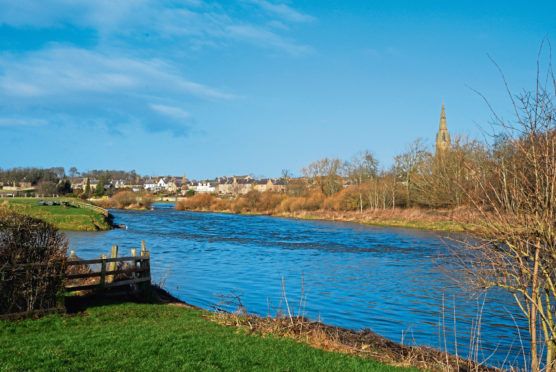
Two great rivers, three magnificent abbeys and a plethora of wonderful hills pretty much sums up this Great Scottish Journey from Peebles to Kelso through the gorgeous Scottish Borders.
Approximately 65km (40 miles) separates Peebles and Kelso and if the great outdoors is your thing, this may be the trip for you.
The River Tweed cuts through the lively town of Peebles, flanked by rolling hills including the Glensax Horseshoe, which should be on the bucket list of any fervent walker. Further along the A72 is the renowned Glentress, a mecca for mountain bikers.
The Minchmoor Hills offer superb views of the rolling Scottish Borders countryside as the route skirts Selkirk and enters Melrose, home to an impressive abbey and the iconic Eildon Hills.
In the Bronze Age it’s thought up to 2,000 people lived on the Eildon Hills, mainly on the flat-topped North Hill.
Dryburgh Abbey stands over the River Tweed near Newton St Boswells while Smailholm Tower is a fascinating place to visit.
It is then on to Kelso where the Tweed and the Teviot, two of Scotland’s great salmon rivers, convene.
Nearby, the 12th-Century Kelso Abbey confirms the history that permeates this incredibly scenic landscape.
You can read about a whole series of fantastic journeys in our fabulous new book from Keith Fergus. To buy a copy, go to dcthomsonshop.co.uk or call 0800 318 846 (Freephone UK). Lines open Mon-Fri 8am-6pm, Sat 9am-5pm.
Fact file
- Peebles has been a major trade route between the Central Belt and Scottish Borders for centuries. Its Cumbric translation Pebyll means Place of Sheilings.
- At 742m Dun Rig is the highest point of the Glensax Horseshoe and highest in the Scottish Borders.
- Established in 1136 by David I, Melrose Abbey was the first Cistercian monastery built in Scotland.
- Dryburgh Abbey is the final resting place of Sir Walter Scott and Field Marshall Earl Haig.
- Smailholm Tower was built in the mid-15th Century. Due to its proximity to the Scottish/English border, raiders attacked it many times over the years.
See more: visit scottishhorizons.photoshelter.com

Enjoy the convenience of having The Sunday Post delivered as a digital ePaper straight to your smartphone, tablet or computer.
Subscribe for only £5.49 a month and enjoy all the benefits of the printed paper as a digital replica.
Subscribe